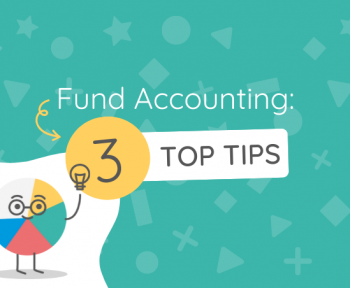In this blog, Tim Wyatt, from Wyatt & Co Chartered Accountants, explains what creditors and debtors are in fund accounting. Tim has many years of experience working with churches and charities across the UK. Here he gives examples of common applications of creditors and debtors for churches and charities accounting on an accruals basis.
Introduction
When accounting on an accruals basis (rather than a receipts and payments basis) you need to consider the transactions incurred in a period, rather than when cash changed hands during the period. Therefore, some transactions near the start or end of a financial period may need ‘moving’ to an adjacent period or year via an adjustment. Creditors and Debtors refer to these adjustments relating to transactions which occur in a different financial period (usually a financial year).
This blog focuses on current creditors and debtors rather than loans, debt and other types of securities.
An example of a need for an adjustment is if a charity that has a calendar financial year (i.e. 1st January – 31st December) receives an invoice for services in December. But it doesn’t pay the invoice until the following January, which is in the next financial year. The invoice relates to the first year, but the transaction actually occurred in the following financial year. So, on 31st December, the charity owed the money. Therefore, it was classed as Accounts Payable (this is explained further below).
Sometimes, these adjustments identify you owing a third party either money or services, because you’re paying late, or they’ve paid you early. Sometimes the third party will owe you money or services. This is either because they’ve paid you late, or you’ve paid them early.
When you owe the third party, this is a creditor.
When they owe you, it’s a debtor.
The four main types of creditors and debtors
A helpful way of thinking about creditors and debtors is splitting them as shown in the table below:
- Where money is received in or paid out of your bank account prior to the period it relates to, these are sometimes called ‘deferrals’ (described as ‘early’ in the table below).
- Where money is received in or paid out of your bank account after the period it relates to, these are called accruals (described as ‘late’ in the table below).
| Income (received) | Expenditure (paid) | |
|---|---|---|
| Early | Deferred income (they’ve paid you early, you owe them a service) CREDITOR e.g. ticket sales for an event next year | Prepayment (you’ve paid them early, they owe you a service) DEBTOR e.g. 36 months IT support paid upfront |
| Late | Accounts Receivable (you’ve given them a service, they owe you money) DEBTOR e.g. invoice owing to you for room hire | Accounts Payable (they’ve given you a service, you owe them money) CREDITOR e.g. invoice unpaid by you for cleaning services |
Thinking about push and pull
Another way to think of creditors and debtors is in terms of pull and push. Watch this video to find out more:
Making these adjustments ensures that the overall picture of your financial year is correct by pulling in what relates to your financial year and pushing out what doesn’t.
Let’s look at some examples. A debtor is either pulling in income into your financial year or pushing out expenditure. Either causes your year-end position to improve. This is either income that hasn’t yet been paid but should have been, or pushing out expenditure which has been paid but shouldn’t have been quite yet.
Similarly, a creditor is either pulling into your financial year expenditure which you’ve not yet paid which relates to the year. Or, pushing out income which has been paid early to you and doesn’t relate to the year. This process matches off the activity that’s happened in the year so that your accounts show a full and true picture.
Common examples of the four main types of creditor and debtor
Deferred Income (income received early = creditor)
Ticket or event payments received near year-end, but which relate to events taking place the following year. For example, a church weekend away taking place in early January.
Prepayment (payment made early = debtor)
Subscriptions or leases paid upfront which last 12 months and span two financial years.
Paying in advance for utilities. Commonly a payment in November or December for the period January to March the following year.
Accounts Payable (payment made late = creditor)
Any supplier or purchase invoice (in ExpensePlus it’s called an Invoice to Pay), which will be paid in the financial year after the invoice date.
Accounts Receivable (income received late = debtor)
Any customer or sales invoice due to you for which payment is not made in the same financial year as the invoice was raised. If you prepare the invoice in advance but date it for the following year, this does not apply.
Gift Aid claims which relate to giving in one year, but not yet claimed/paid until the following year.
Each of these pulls and pushes helps to make sure that in your accounts you are accounting for the activity which relates to your year. Consequently, the accounts will show a true and fair picture of the activity that happened during that year, whether or not all of the related financial transactions took place at the correct time.
How do I make adjustments in my accounts?
In general, adding adjustments is necessary at the end of your financial year before creating your accounts. Some accounting systems will automatically create accruals for you throughout the year.
For example, ExpensePlus does this via the Auto-Accruals feature. This feature creates an Accounts Receivable adjustment when customer invoices (aka ‘sales invoices’) are created, which is then reversed when the invoice is paid. Similarly, an Accounts Payable adjustment is created when an Invoice to Pay (aka ‘supplier/purchase invoice’), or Expense Claim, or Gift of Money is created, and then reversed when this is paid.
In some circumstances, you may need to add manual adjustments in your accounting software as you prepare your accounts ready for year-end.
You can learn more about adding adjustments and other key tasks churches and charities on accruals basis need to do at year-end before creating their accounts in this video about year end tasks.
ExpensePlus is a cloud-based fund accounting software package designed for churches and charities. ExpensePlus makes managing fund accounts simple and straightforward.

To find out more about Fund Accounting, visit the Stewardship Resources Hub which has lots of helpful information and resources.

Tim is a qualified ICAEW Accountant at Wyatt & Co Accountants based in Leeds, which specialises in providing accounting services for charities, including independent examinations, outsourced finance, as well as governance advice.







